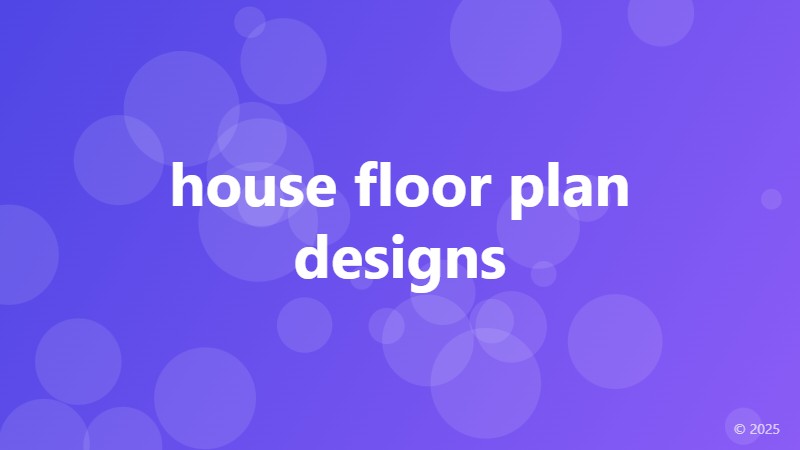house floor plan designs

Understanding House Floor Plan Designs: A Comprehensive Guide
When it comes to building or renovating a home, one of the most crucial aspects to consider is the house floor plan design. A well-designed floor plan can make a significant difference in the functionality, aesthetic appeal, and overall value of your property. In this article, we'll delve into the world of house floor plan designs, exploring the different types, benefits, and essential factors to consider when creating your ideal living space.
Types of House Floor Plan Designs
There are numerous house floor plan designs to choose from, each catering to specific needs, preferences, and lifestyles. Some of the most popular types include:
- Open Floor Plan: Characterized by a seamless transition between living, dining, and kitchen areas, open floor plans promote social interaction and a sense of spaciousness.
- Split-Level Floor Plan: Featuring multiple levels, split-level floor plans offer a unique blend of functionality and visual appeal.
- Ranch-Style Floor Plan: Ideal for those who prefer single-story living, ranch-style floor plans are perfect for families with elderly or disabled members.
- Multi-Story Floor Plan: Suitable for larger families or those who crave ample storage space, multi-story floor plans offer a more traditional layout.
Benefits of Custom House Floor Plan Designs
While pre-designed floor plans can be convenient, custom house floor plan designs offer a range of benefits, including:
- Personalization: Tailor your floor plan to suit your unique needs, lifestyle, and preferences.
- Optimized Space: Make the most of your available space, ensuring a functional and efficient living area.
- Increased Property Value: A custom floor plan can significantly boost your property's value, making it more attractive to potential buyers.
Essential Factors to Consider When Designing Your House Floor Plan
Before finalizing your house floor plan design, consider the following crucial factors:
- Natural Lighting: Ensure your floor plan maximizes natural light, enhancing the ambiance and reducing energy costs.
- Room Placement: Strategically place rooms to minimize traffic, noise, and distractions.
- Storage and Organization: Incorporate ample storage solutions and organization systems to maintain a clutter-free living space.
- Sustainability: Incorporate eco-friendly features, such as energy-efficient appliances and recycled materials, to reduce your carbon footprint.
Conclusion
A well-designed house floor plan is the backbone of a functional, comfortable, and beautiful home. By understanding the different types of floor plans, benefits of customization, and essential factors to consider, you'll be well on your way to creating your dream living space. Remember to prioritize your needs, preferences, and lifestyle when designing your ideal house floor plan.